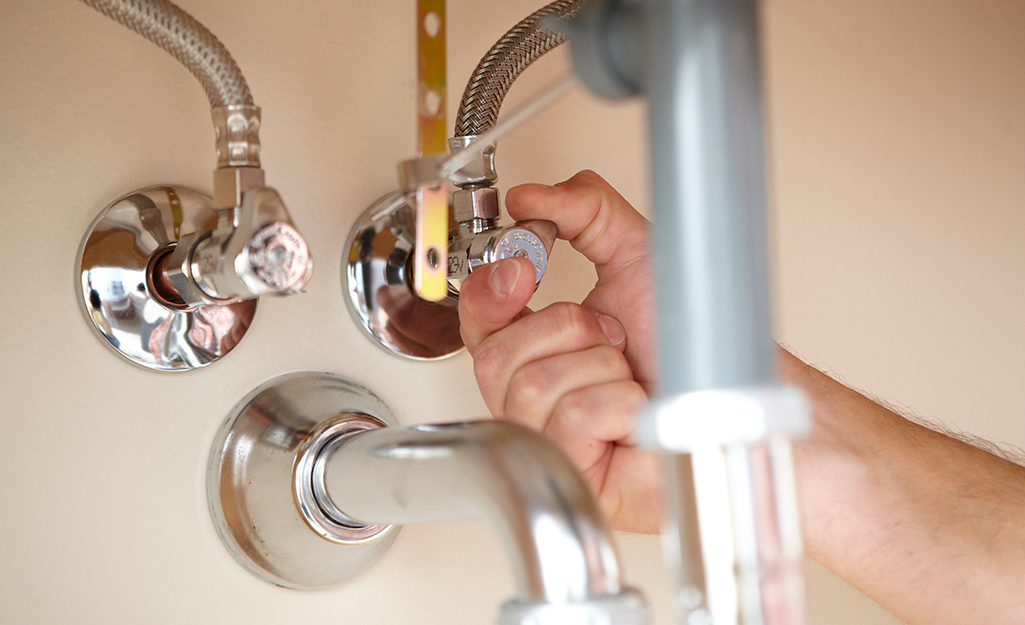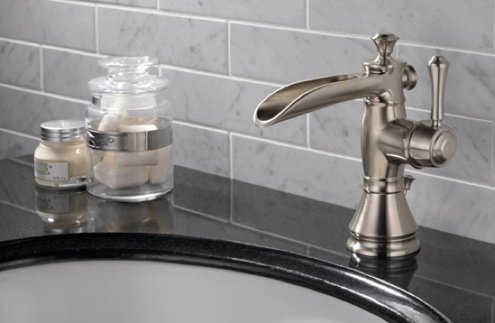Learning the Value of Dealing with a Broken Faucet
Learning the Value of Dealing with a Broken Faucet
Blog Article
What are your thoughts on Why It's Important to Fix Leaky Faucets?

Leaking taps might appear like a small aggravation, but their impact exceeds simply the aggravation of the audio. From drainage to incurring unneeded financial costs and wellness threats, ignoring a dripping tap can bring about numerous effects. In this write-up, we'll look into why it's critical to resolve this typical household concern quickly and efficiently.
Wastage of Water
Ecological Effect
Dripping taps contribute significantly to water wastefulness. According to the Environmental Protection Agency (EPA), a single tap dripping at one drip per secondly can waste more than 3,000 gallons of water each year. This not only stress water resources however additionally affects ecosystems and wildlife depending on them.
Step-by-Step Guide to Repairing a Dripping Tap
Devices Required
Prior to attempting to take care of a trickling tap, gather the required tools, consisting of a flexible wrench, screwdrivers, substitute components (such as washing machines or cartridges), and plumber's tape.
Common Tap Issues and Their Solutions
Recognize the type of faucet and the specific issue causing the drip. Common problems consist of damaged washing machines, rusty valve seats, or defective O-rings. Describe supplier instructions or on the internet tutorials for detailed advice on repair work.
Financial Expenses
Raised Water Expenses
Beyond the environmental influence, dripping taps can inflate water costs significantly. The built up wastage gradually converts right into higher utility expenditures, which might have been avoided with timely repairs.
Prospective Home Damages
Moreover, extended trickling can lead to damage to fixtures and surface areas bordering the tap. Water accumulation can cause staining, rust, and also architectural concerns if left neglected, resulting in additional repair work costs.
Health Concerns
Mold and Mildew Development
The consistent visibility of dampness from a trickling tap produces an optimal atmosphere for mold and mold growth. These fungi not just jeopardize indoor air quality yet likewise position health threats, especially for individuals with respiratory system conditions or allergic reactions.
Waterborne Diseases
Stationary water in dripping taps can become a breeding place for germs and various other pathogens, raising the risk of waterborne conditions. Contaminants such as Legionella germs prosper in stagnant water, potentially resulting in significant illnesses when ingested or breathed in.
Do it yourself vs. Professional Repair work
Pros and Cons of DIY Repair Work
While some may attempt to take care of a leaking tap themselves, DIY repair work include their own set of challenges. Without proper knowledge and tools, DIY efforts can exacerbate the problem or cause incomplete repair services, extending the issue.
Benefits of Hiring a Professional Plumber
Working with a specialist plumber makes sure that the underlying reason for the dripping tap is addressed properly. Plumbing professionals possess the knowledge and tools to identify and fix faucet concerns effectively, conserving time and reducing the threat of further damages.
Ecological Responsibility
Private Payment to Conservation
Taking obligation for dealing with dripping faucets lines up with more comprehensive efforts toward water conservation and environmental sustainability. Every person's actions collectively make a substantial influence on maintaining precious resources.
Sustainable Living Practices
By prioritizing prompt repairs and adopting water-saving habits, individuals add to lasting living techniques that profit both present and future generations.
Safety nets
Normal Upkeep Tips
To avoid dripping taps, execute regular maintenance such as cleansing aerators, evaluating for leaks, and replacing damaged parts promptly. Additionally, take into consideration installing water-saving gadgets or updating to more effective components.
Importance of Prompt Repair Works
Resolving dripping faucets as soon as they're seen prevents further water wastage and potential damage, ultimately saving both water and money over time.
Effect On Property Worth
Perception of Well-Maintained Property
Maintaining a residential property in good condition, consisting of attending to maintenance issues like trickling taps, boosts its viewed value and charm amongst prospective purchasers or renters.
Impact on Resale Value
Properties with properly maintained plumbing components, including taps, command greater resale worths in the property market. Dealing with leaking faucets can contribute to a favorable impact throughout residential or commercial property inspections and settlements.
Final thought
Attending to a trickling faucet surpasses simple convenience; it's a crucial action toward conserving water, decreasing financial expenses, and protecting wellness and residential or commercial property. Whether through do it yourself fixings or specialist support, acting to repair dripping faucets is a little yet impactful way to promote accountable stewardship of sources and contribute to a healthier, a lot more lasting future.
Why Are My Faucets Dripping (And Can I Fix it Myself)?
Causes of a Dripping or Leaking Faucet
Whether you’re hearing drops of water falling and hitting a sink, or noticing water ooze out from the base of the spout, you shouldn’t ignore a dripping or leaking faucet. And, the good news is, sometimes you can fix the problem yourself.
In this article, we’ll review a few common causes of dripping and leaky. We’ll also walk you through some basic ways to find the problem and handle it without calling anyone — and let you know when to call in a pro.
But, no matter what the cause, or whether you can handle it on your own, the sooner you address it, the better.
Each drip may be a tiny amount of water. But, they all add up quickly. According to the U.S. Geological Survey, one faucet losing one drop every 20 seconds — five a minute — wastes around a liter of water every day, and 173 gallons a year.
Add in more than one in your house, and it’s a lot of water to waste. So, we’ll help you get to the bottom of things quickly.
Four Reasons Your Faucet May Be Dripping
Aerator is Damaged or Unseated Valve Seat is Corroded O Ring is Loose or Worn Out Part of the Assembly is Loose Aerator is Damaged or Unseated
If you unscrew the end of your faucet, you’ll find the aerator. It’s the little stem piece with a screen on it that shuts off the water circulation.
If it’s damaged, or if it’s not sitting right, it will allow water to pass through.
Valve Seat is Corroded
Next is the valve seat, which is connected to the washer. If the washer wasn’t in place correctly, then it could have ground against the seat. Over time, this damages the valve seat.
The problem could also be corrosion: Over time, the part has worn out, and it’s now allowing water to pass through.
O Ring is Loose or Worn Out
Since the o ring is only a small rubber gasket, it’s a common reason why the faucet is dripping. You’ll find it at the base of the faucet, and it’s there to keep water from coming out where it’s not supposed to.
However, it’s common for the o ring to wear out over time. When it does, you’ll notice a drip.
Part of the Assembly is Loose
So far, we’ve looked at a few small, specific parts. But, the problem could be anywhere in the assembly if something’s out of place.
Even if a part isn’t damaged, over time, it may have become loose or dislodged. It could be the parts we mentioned, or the aerator at the tip of the faucet, the stem itself,
Can I Fix a Leaky Faucet Myself?
Depending on the problem, and how handy you are, there’s a chance you can fix a leaky faucet without calling a professional. But, you do run the risk of making the problem worse.
If it’s a small drip, you can certainly try a few troubleshooting tactics. We’ll walk you through them in a moment.
But, no matter what, your first step should be shutting off the water coming into the faucet. You should find a shutoff valve under the sink on the pipes leading to it. Turn each one clockwise until they close tightly.
Next, make sure you have the right tools for whatever you’re attempting. It’s tempting to make do with what you have. But, you need the right ones for a reason: You’re often dealing with small parts that can break if you handle them carelessly.
If you’re feeling confident, here are some places to start.
Items Near the Tip of the Faucet
A few of the parts we mentioned — particularly the valve seat and washer — are located at the tip of the faucet where the water comes out. They’re easy to access, making it a good place to start.
Check the O Ring
To check the o ring, you’ll need to take off the spout at the base. It’s easiest on kitchen sinks with long spouts, versus the smaller, bulkier base on most bathroom sinks.
Either way, this can be tricky, so do it carefully and don’t force anything. If it’s not coming right off, you’re much better off calling in a pro than possibly breaking something.
For a kitchen sink, there’s usually a nut or coupling assembly at the base of the spout. These often slide off easily without using any tools.
Once you’ve disassembled those parts, gently but forcefully twist off the spout.
Then, you can see the o rings. There should be two of the rubber gaskets on the base. If they look worn or damaged, replace them, and see if that solves the problem.

We had been shown that editorial about Water Dripping from Faucet: Why and How to Fix from a friend on a different web address. Loved our article? Please quickly share it. Help another person locate it. Thank-you for your time invested reading it.
Report this page